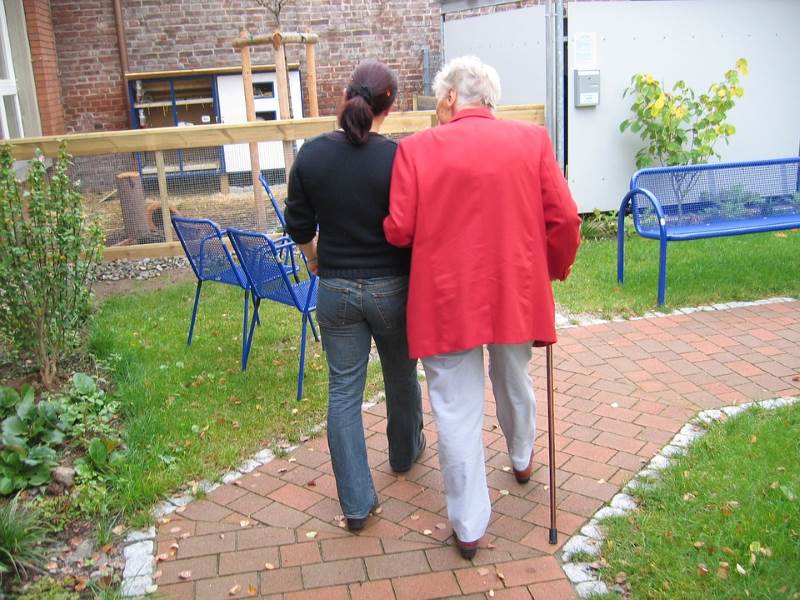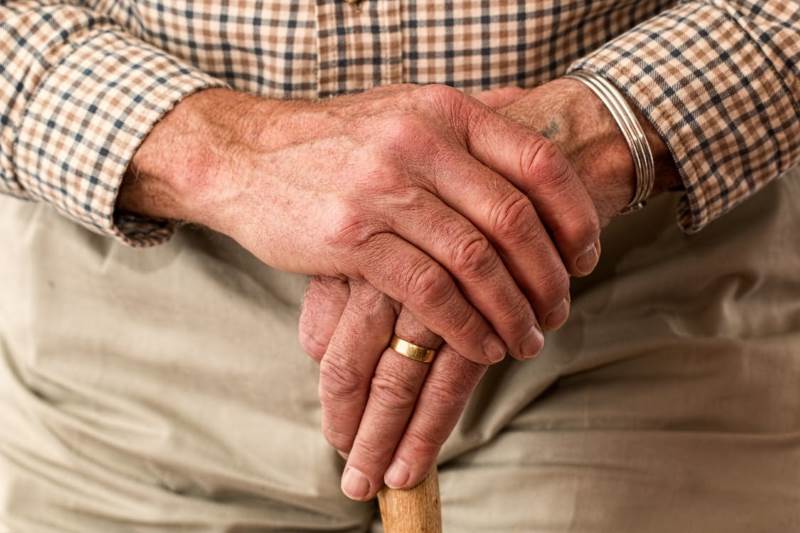
Vestibular Rehabilitation (Dizziness and Vertigo)
While many people consider seeing a physiotherapist to help with their recovery after an injury or surgery, few consider scheduling a physiotherapy appointment for injury prevention. When it comes to fall prevention, we observe and assess functional movements including your walking pattern, balance and lower extremity strength. A personalized program including education and home exercises can then be designed based on the information we gather from the assessment to help improve your strength, balance and walking pattern.
To avoid tripping while walking, it is important to develop a safe walking pattern. The swing through leg should be lifted high enough to properly clear the ground. A shuffle pattern can result in catching the toe and tripping. Also, since a large portion of walking is spent standing on one foot while the other leg is swinging through, we want to assess balance and stability on the stance leg. If unsteadiness is noted while standing on one foot, a walking aid such as a cane or walker can be beneficial to add stability and support. A physiotherapist can adjust a walking aid and provide instructions and a demonstration. A physiotherapist can also teach safe and effective exercises to help improve walking pattern and endurance for those who feel weak or unsteady while walking.
It is very important to stay active and keep moving. Daily physical activity is essential to maintain aerobic endurance, lower extremity strength and balance. It is never too late to start an exercise program. It is best to think of exercise as a slow gradual progression rather than an all or none activity. It is important that you find an activity that is enjoyable to you to stay motivated and keep active. This may include walking, hiking, cycling, swimming, tennis or golfing. In addition to aerobic activity, a physiotherapist can design an appropriate home exercise program to help improve endurance, balance, coordination and strength.

Vestibular Rehabilitation (Dizziness and Vertigo)
An area of concern that I often hear about while working with an older population is the fear of falling. It is also fairly common that I will assess and treat an injury that is the result of a fall. A fall may occur due to poor balance, an unsafe walking pattern or general deconditioning.
Many older people tell me that they simply avoid physical activity due to the fear of falling and the risk of an injury. The problem with this approach is that as we become less active we experience a gradual decline in muscle strength, endurance, flexibility and balance. This gradual deconditioning puts us at a greater risk of suffering a fall. Also, as we become sedentary and weak, the recovery process if an injury does occur is often much slower than it would be for someone who is fit and active.
In the clinic we will look at functional measures including walking, standing on one foot and a sit to stand test to help us determine walking pattern, balance and lower extremity strength. While walking, we want to see that the leg swinging through is lifted high enough to fully clear the ground. A shuffle pattern can result in catching the toe quite easily. As well, since a large portion of walking is spent standing on one foot while the other leg is swinging through, we want to assess balance and stability on the stance leg.
To avoid tripping while walking, it is important to develop a safe walking pattern. The swing through leg should be lifted high enough to properly clear the ground. We also want to see a pattern of striking with the heel and pushing off the big toe with each step. If unsteadiness is noted while standing on one foot, a walking aid such as a cane or walker should probably be used while walking. A physiotherapist can adjust a walking aid and demonstrate how to use it correctly.
A cane or walker is especially important when walking outdoors where there are many obstacles including uneven ground, curbs and other potential tripping hazards. A walking aid should also be kept close to the bed in case it is needed when getting up during the night. A physiotherapist can teach safe and effective exercises to help improve walking pattern and endurance for those who feel weak or unsteady while walking.
It is also very important to stay active and keep moving. Daily physical activity is essential to maintain aerobic endurance, lower extremity strength and balance. It is never too late to start an exercise program. It is important to find an activity that is enjoyable to stay motivated to keep active. This may include walking, hiking, cycling, swimming, golfing, tennis, Tai Chi, yoga or Pilates. In addition to aerobic activity, a physiotherapist can design an appropriate home exercise program to help improve endurance, balance, coordination and strength.
Hips and Knees, Physio Articles
Hip osteoarthritis is a common condition that involves the degeneration of the articular cartilage of the hip joint. If you have this condition and are noticing an increase in pain and a decrease in physical function you may be wondering what treatment options are available to you.
With osteoarthritis of the hip you may feel a constant ache localized to the groin and side of your hip and sometimes extending into the front of your thigh and knee. The hip often feels stiff, especially first thing in the morning when you get out of bed and it can make activities of daily living much more painful including standing, walking and stairs. It can also make it difficult to put your socks on, get into and out of your car and even get on and off of the toilet.
Stiffness, pain and having difficulty with many previously easy daily activities may lead you to want to do less physical activity. The trouble is, not moving will often lead to weakness, further stiffness and general deconditioning.
A physiotherapist can help design a treatment program with a focus on decreasing pain, increasing range of motion and flexibility, improving core stability, gaining muscle strength and endurance and improving general conditioning. Other functional goals often include improving walking pattern, speed and distance, ability to go up and down stairs without pain and better control going from sit to stand.
This is often accomplished through a combination of education, manual therapy and exercise. An exercise program is often extremely beneficial to help improve physical function and decrease pain. A physiotherapist is an excellent resource to put together a safe and effective home exercise program for you to perform daily at home or at your local gym. Also, if you enjoy swimming, bring this up with your physiotherapist as aquatic exercise is a great form of treatment for hip osteoarthritis.
Other possible physiotherapy treatments that may be effective for some individuals with arthritis of the hip include: acupuncture, massage, heat on the muscles around the hip, ice, TENS, supportive footwear and/or a gait aid such as a cane or walking poles. It is important to talk with your doctor about your arthritis to discuss other treatments that may be beneficial to help manage your symptoms. Certain medications may be helpful, but it is important to bring this up with your doctor to be sure they are appropriate for you. Also, if you are overweight, a weight management program can be extremely beneficial to decrease the stress on your joints. Since nutrition plays a crucial role in weight management, it is important to have this discussion with your doctor.
A small portion of individuals with hip osteoarthritis will eventually opt to have a total hip replacement. This is often the case when symptoms are progressively getting worse and significantly limiting activities of daily living. If you have had a total hip replacement a physiotherapist guided post-operative hip strengthening program is ideal in order to decrease pain, improve your hip function and return to your active lifestyle.

Physio Articles
Optimal bone health is a serious consideration in people approaching mid-life. It is common knowledge that bones become more brittle as we age. What may be less recognized are the factors we can control through exercise and nutrition in the first half of adult life that have a direct effect on prevention of osteoporosis.
Osteoporosis is a disease characterized with a loss in bone mass and deterioration in the sturdiness of bone structure. This is associated with the increased risk of fractures, particularly in the hip, wrist and spine. It is prevalent in the older population. If you are a woman, you have a 50% lifetime risk of a fracture from osteoporosis.
Bone loss is an insidious process. In the early stages it is called “osteopenia” It can occur when an arm or leg is casted after a frracture. A loss in bone mineral density (BMD) can accelerated after taking steroid medications or with certain autoimmune disorders or diabetes.
Reduced levels of estrogen after menopause accelerate bone loss. However, it is well- established that if a woman in her 40’s and 50’s exercises regularly and has good nutritional habits, she can diminish her post-menopausal bone density loss substantially. Osteoporosis is optional!
How does exercise affect bone health?
Bone is a living tissue. Bone cells, called osteophytes, have the ability to act like strain gauges and adapt to the amount of stress placed on them. Regular weight bearing exercise or strength training is essential to maintaining healthy bone. Resistance training improves muscle mass and strength and can increase spine and hip bone density. It is essential that the exercises chosen are safe and appropriate for the individual. Physiotherapists assess posture, understand risk factors and can advise which exercises are best for those with osteoporosis.
As a preventative measure and for those with mild osteopenia, high and medium impact exercise such as soccer, tennis, activities such as skipping and step-ups can stimulate healthy bone cells to produce a stronger bony matrix and increase BMD.
For individuals with moderate osteoporosis, weight bearing exercise and moderate impact exercises are appropriate, high impact exercise is not. Strength training exercises should target the specific areas affected. Balance exercises and fall prevention awareness are important, as falls can result in fractures, which are painful and can take much longer to heal than with normal bone. Working with a physiotherapist with specific knowledge about osteoporosis to set up an exercise program is highly recommended. Check with your physician before beginning a strenuous exercise program.
Attention to postural alignment during strength training is important. Certain exercises place too much strain on the midback area and can increase the rounding, or kyphosis in this area. For example, repeated curl-ups for abdominal strengthening, or swinging kettle balls with arms extended should be avoided.
Why does nutrition play such an important role in prevention of bone mineral density loss?
Bones are important warehouses for calcium and other important minerals needed for cellular function. If our diet is low in calcium, the body borrows it from our bones. If it’s not restored, a net deficit in minerals can result in reduced BMD.
In order to maintain optimal bone health, sufficient amounts of Calcium, Magnesium, Vitamin D are recommended.
Vestibular Rehabilitation (Dizziness and Vertigo)
The winter Olympics in Sochi was filled with scary crashes in nearly every sport. Hearts sank when seeing chances at a medal slip, the pain on the athletes’ faces, and some of the injuries that resulted. We probably all know someone who has, or have ourselves, taken a big spill at the local hill.
But that’s not the only place where falls can occur, especially during this time of year with the fluctuating melt and freeze of roads and walkways. Slips and trips can happen in the community, even in our own homes, for a variety of reasons. Sometimes we can walk away from them with little injury, other than to our pride, but unfortunately sometimes injuries occur. In order to avoid beginning the spring season hurt, it’s good to know what the risk factors to falls are and to address any concerns that may exist.
Some readers may recall a previous article I wrote about vertigo– a condition that makes you feel like you or the world is spinning. This or other conditions of the vestibular system can contribute to feeling dizzy or losing your balance. The vestibular system is partially located in the inner ear, and gives our brain information about where our head is relative to gravity. When it is affected, a conflict of information between the vestibular system and other sensory systems happens. Some related conditions include: Benign Paroxysmal Positional Vertigo (“BPPV”), labryinthitis or neuritis (types of infections), or Ménière’s disease. This in turn may cause vertigo, dizziness, or unsteadiness. Some of the causes of vertigo or dizziness can be treated to help you feel more stable on your feet.
Weaknesses in the legs or trunk, sensory conditions of the feet, or decreased ‘proprioception’ (the information about where a body part is relative to the rest of the body) are other risk factors for falling. Proprioception, balance, and strength can be trained through regular exercise. Tai Chi and Yoga are examples of programs that assist in reducing fall risk. However some people require exercises tailored to their individual abilities and needs. It is important to evaluate whether a particular exercise is safe and appropriate for you. Having an understanding of the exercise and of your own abilities is helpful, but when in doubt, it is helpful to consult a health care provider, or discuss with the instructor.
Risk factors for falling don’t only exist within our bodies, but also in our environment. It’s important to note that while the temperatures have been going above freezing, those cold nights and days can result in a layer of ice. Slowing your pace over these areas, wearing proper footwear, and always being aware of the conditions will help. Within your home, having adequate lighting, keeping the floors and hallways clear of obstacles, and keeping rugs or carpets secured down will also reduce your chances of tripping.
With the example of the Olympic sports of skiing, snowboarding and skating, big falls occur frequently. It’s not often a case of needing to address strength or balance, and rarely is the environment controllable. For these activities, it’s important to protect yourself as much as possible. Wrist guards are light, can fit under gloves, aimed at reducing the risk of a facture when impacting the ground. A common injury with falling is the FOOSH – a ‘Fall Onto an Outstretched Hand’. A brace will keep your wrist in an ideal position and can absorb some of the force to reduce, but not eliminate, the likelihood of a wrist fracture. If you ski, braces also exist to protect the thumb, which can be injured by the ski pole.
If you feel you are at risk of falls, or have an injury after taking one, it is important to see a health care professional to either assist in the prevention of, or in the rehabilitation after, a slip. Reducing the risk can be easy in some situations: adjusting your footwear, modifying your gait aid if you use one (for example, attaching an ice grip onto a cane), making changes to your home environment, or partaking in a strength and balance program designed for your needs. In some cases, dizziness or lightheadedness occurs as a side-effect from medication, so speaking to your doctor may help. From a physiotherapy context, your strength, balance, vestibular function, or any combination of those factors can be assessed and treated as is appropriate for you.



